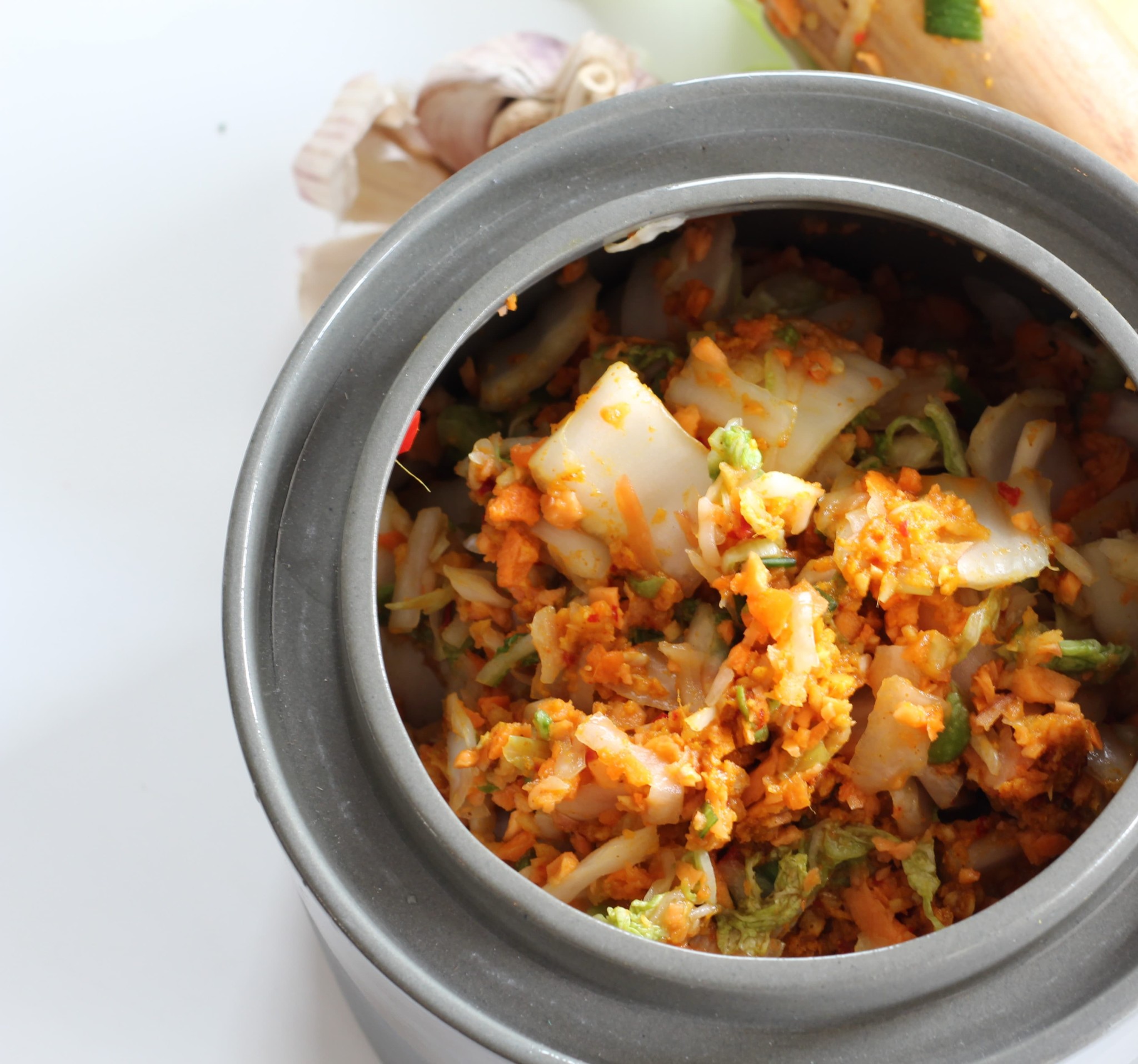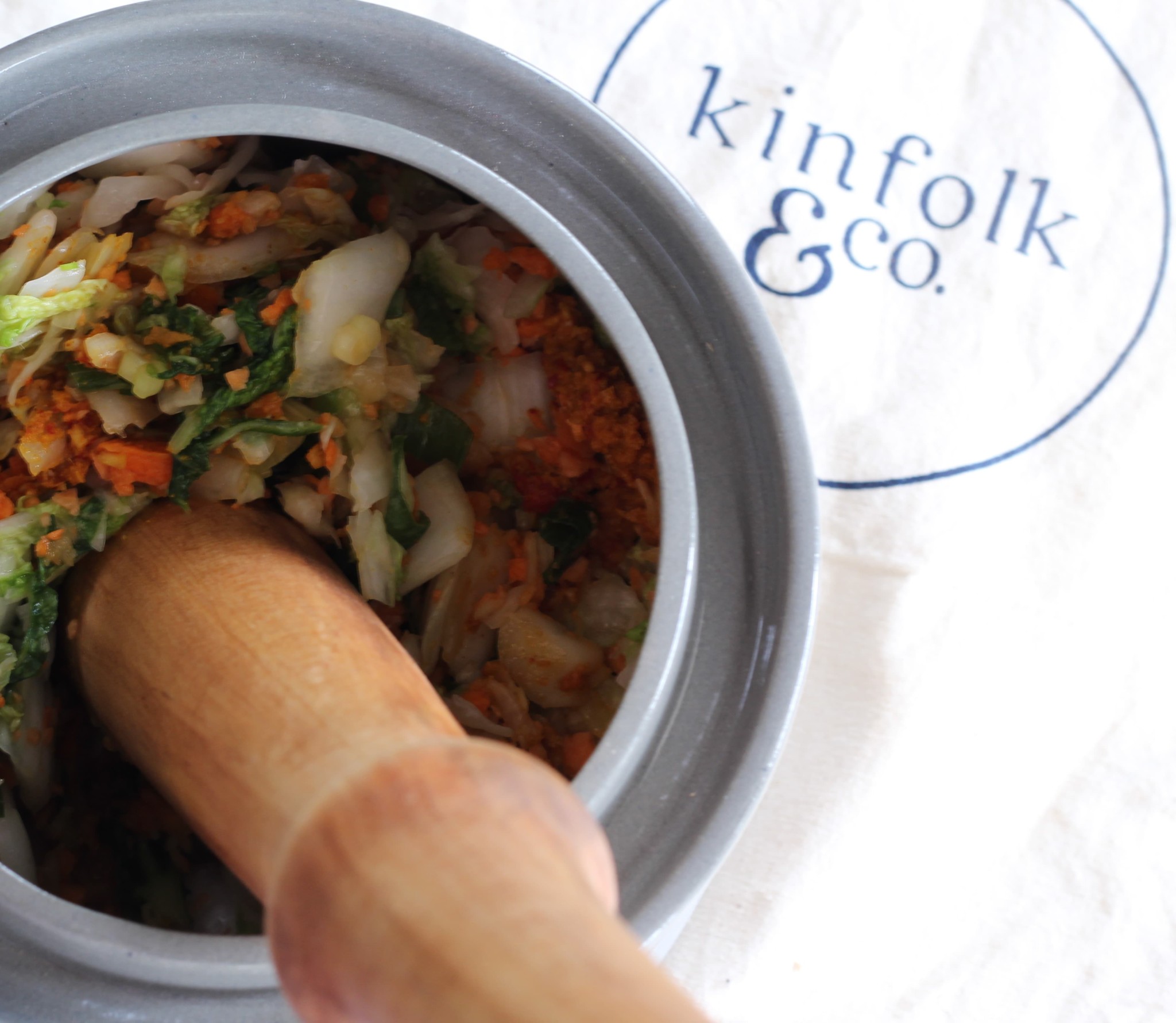If you are not on the fermented foods bandwagon yet you need to JUMP ON IMMEDIATELY. Like now. Fermented food is the new black. Adios probiotic capsules & HELLO probiotic rich foods. Not only are fermented foods going to give you more variety of good bacteria in your life but they are so much more potent than even the very best probiotic capsule or powder on the market. By incorporating food containing probiotics we start to establish great long-term, diverse, healthy gut flora far more effectively than if we just take a probiotic supplement. If Kimchi isn’t your jazz then try some other types of fermented veggies, kombucha, kefir, homemade yoghurt etc. The more different types of fermented foods the more diversity of good bacteria you will incorporating into your life. If you don’t know why having a healthy population of bacteria in your gut is important you can get in the know HERE and HERE but basically everything from skin conditions, weight regulation, mental health, immune function, obesity, fatigue & auto-immune disease.
I have been making kraut for a while but have been hanging out for someone to give me a great kimchi recipe and Jeremy came through with the goods! This was also my first time using my new crock from KINFOLK & CO!! This recipe comes courtesy of the awesome Jeremy over at Holistic Lifestyler who is a chiropractor in WA, runs fermenting workshops & has an awesome line of organic clothing that is SO soft & comfy. You can get your mits on his fermenting ebook for only $40 if you tell him I sent you. We’re tight like that. He’ll hook you up. Just email him info@holisticlifestyler.com
Will need approximately 2 Litre sized fermenting vessel, notes on these in the troubleshooting.
Vegetables
Green Cabbage 400 g ; Nappa Cabbage 500g ; Spring onions 100g; Sweet potato 250g; Carrot 100g; Green apple ½ (100g); Salt approx. 30g (which is around 2% of the vegetable weight, this is important as it’s the researched safe ratio of salt to vegetable to provide the optimal environment for fermenting) I recommend good quality Celtic sea salt.
Paste
Fresh Red Chilli 2 ; Turmeric powder 1-2tsp; Cayenne Pepper powder 2 tsp; Chilli Flakes 1 tsp; Garlic 4 cloves; Ginger 4cm grated
Procedure
- Finely chop green cabbage, add salt; massage until brine created
- Chop the end off the nappa cabbage then chop into approx. 3 cm square pieces then chop the spring onions add to green cabbage and massage for a few minutes
- Shred the carrot and sweet potato. Place the green apple through the mandolin or finely slice (if mandolin not available), add to the mix [Note: carrot & sweet potato could also be put through the mandolin if you prefer a slightly chunkier kraut]
PASTE
- Finely chop the chilli, grate the ginger, chop the garlic, add the cayenne, turmeric and chilli flakes. Blend all the ingredients adding filter water as needed to create a paste consistency.
- Add the paste to the vegetable mixture and mix through.
Options; can add some dulse or wakame flakes into the mix, some fresh chives can be added to the paste. Instead of water added to the paste mix some good quality fish sauce can be used may need to go a little lighter in the salt in the vegetable mix as fish sauce is quite salty. Daikon radish also can be added which adds a nice crunch. Korean Chilli powder can be added and is very nice and provides a deep red colour, this is usually found at specialist Asian food stores.
FERMENTING
- Pack ingredients into the jar, so that the vegetables are under the brine that has been created. Close the vessel
- Ferment at room temperature ideally 18-22 deg Celsius for 2-4 weeks before transferring to the refrigerator.
- Once in the refrigerator should last upto a year (although you’ll get through it much faster than that because it’s so delicious!)
TROUBLESHOOTING
- If the vegetables start to rise above the brine at the top during the fermenting period simply remove the lid and with the back of a clean spoon push vegetables back under the brine and close the lid again. Alternatively you can add some kind of weight device to keep the vegetables submerged under the brine.
- If your environment is quite hot the fermenting period may need to be less for instance more like 10 days. If its cooler may need the full 4 weeks. There’s no way of telling when the ferment is ‘done’ on a home scale type set up without testing things like pH etc but sticking to the timeframe suggested is a safe reliable timeframe.
- Jars:
- My personal preference is the ‘Fido’ wire bail lid type which can be found on line at kitchen stores. Otherwise The Fowlers-Vacola jars I’ve found to be the most reliable as the lid never loses its tensile strength like the wire bail types which tend to become faulty after a few years use and no longer create a 100% sealed environment. The downside to the Fowlers jar is they only make them in 1 Litre size now so you have to make them in batches. There are many other ‘specialised’ fermenting jars out there that are more expensive but they really are no more beneficial than the two mentioned. If you want to upsize your fermenting then fermenting crocks are a great option.
4




I know fermented shrimp paste is used often when making kimchi – have you tried using it? I know its not vegan, but just wondering. Thanks!
Hi Danielle, I haven’t tried it but I think it would be delicious!
Your place is valuable for me. Thanks!
Hi Shannon
Thanks for this recipe. I just made this yesterday and I think I will stick to the 10 days because I have a hotter house. Does the kimchi come out nice and crunchy? I’ve got to say I really don’t like soft sauerkraut so I’m just wondering what the consistency is like after a longer fermentation period?
Cheers,
Rachel
It really depends on the temperature and what vessel you are fermenting in. Each batch can be different